Promet - Traffic & Transportation Journal
Pioneering the future of mobility
Welcome to the world of Promet - Traffic&Transportation, where we delve into shaping the future of traffic and transportation through innovation and research. Our platform is dedicated to uncovering the latest insights, trends, and technological advancements impacting transportation systems worldwide.
Through an interdisciplinary approach, we explore how intelligent technologies, sustainable solutions, and transportation planning collectively shape the path towards safer, more efficient, and sustainable traffic and transportation systems.
Welcome to Promet - Traffic&Transportation, where we explore shaping the future of traffic and transportation through innovation and research. Discover the latest insights and technological advancements influencing transportation systems worldwide, aiming for safer, more efficient, and sustainable solutions.
Open Access
We truly believe in knowledge without boundaries!
Journal's metrics
WoS: IF 0.8
Scopus: Citescore 2023 1.9
SJR: Q3 (Engineering)
Latest Issue
Browse through the selection of our newest research
To reveal the speed control behaviour and manoeuvring characteristics of direct vehicles that stop-go through signalised intersections, a large-scale field driving test was carried out in Chongqing to collect vehicle data under natural driving conditions. The characteristics of speed, longitudinal acceleration rate and their two-dimensional correlation were analysed for deceleration and acceleration behaviour at signalised intersections. Further, a sensitivity analysis of the simulation model on measured data was done with the micro-traffic simulation experiment of a signalised intersection. The following were observed: (1) Drivers’ speed-selection behaviours become more concentrated with closer distance from the stop point. The transects ±25 m from the stop point are abrupt change points in the discrete nature of driver speed-selective behaviours. (2) Drivers’ desire to decelerate during the stop-go through signalised intersections is more robust, with the magnitude of pedal manoeuvres for deceleration behaviours being more intense than that for acceleration behaviours. (3) There is a nonlinear correlation between longitudinal acceleration rate and speed. The longitudinal acceleration rate increased with increase in speed and then decreased with the inflection point at 15 km/h. (4) The micro-traffic simulation’s acceleration rate model is sensitive to measured acceleration rate parameters. This study guides the parameter setting of speed, deceleration rate and acceleration rate models for microscopic traffic simulation and for parameter calibration of the car-following model.
2024 (Vol 36), Issue 6
The proposal to create front-loading warehouses has been suggested as a tactic to enhance the effectiveness and quality of distributing fresh agricultural products in the concluding stage of delivery. Nevertheless, there has been a noted escalation in the rate of loss of these products, which can be ascribed to multiple factors, including inaccuracies in demand forecasting. This incongruity arises from consumers’ inability to consume the initially forecasted quantities and unforeseen surges in demand from specific businesses. Consequently, surplus products are left unsold and eventually wasted. This study explores the viability of implementing a reverse logistics model for fresh agricultural products in tandem with the front-loading warehouse. The study presents both traditional and reverse dual models aimed at cost minimisation and introduces novel criteria for the selection of warehouse locations to enhance the efficiency of reverse logistics operations. An advanced hybrid heuristic optimisation algorithm is employed to identify optimal solutions, primarily focusing on minimising product loss rates, reducing logistics expenses and establishing a more equitable supply-demand equilibrium in the area. In the case of Nanjing, it is found that compared with the traditional model, because the network model assumes more functions, the front-loading warehouse in the reverse model has more site selection points in high-demand areas to meet the needs of consumers and is consistent with the distribution of population density and economic activities in Nanjing. At the same time, among the factors affecting the total cost, it is necessary to focus on transportation and fixed costs, while the impact of time and freight damage costs is less.
2024 (Vol 36), Issue 6
This paper attempts to determine the role of street lighting in the spatial clustering of night-time crashes involving pedestrians in the Republic of Croatia. Five-year (2018–2022) night-time pedestrian crash data were used in conditions with and without street lighting. First, distance-based statistical methods were used to assess the spatial clustering and deviations from complete spatial randomness (CRS) of the crash patterns. Second, the global Moran’s I analysis was conducted to investigate a degree of spatial autocorrelation of the annual crash counts aggregated in 21 counties of Croatia. Finally, the local indicators of spatial association (LISA) were used to identify the locations of the crash count hotspots. The results of the ANND analysis confirm a significant clustering of crashes for both street lighting conditions. However, different global Moran’s I values for both conditions were obtained with a high and statistically significant positive value for the crash counts without street lighting. Local Moran's I analysis reveals that the High-High (H-H) county clusters are located in coastal regions of Croatia, while the Low-Low (L-L) county clusters appear in the East continental part, next to Slavonia. The results suggest that inadequate lighting conditions have an impact on the clustering of pedestrian crashes at night.
2024 (Vol 36), Issue 6
With the rapid expansion of ride-hailing services, it has gradually become a new travel choice for urban residents. Various research studies have focused on market relationships and platform strategies from the perspective of platform competition. However, little research has been studying issues related to the platform integration of ride-hailing services from the corporate perspective. Based on an analysis of integration modes and travellers’ behavioural factors, we established an evolutionary game model to study travellers’ choice behaviour under the integration of ride-hailing platforms. Furthermore, this study employed methods of model deduction and numerical study. The findings indicate the following. (1) When the travel risk associated with platform integration is high, travellers are less likely to choose ride-hailing services, and the integration strategy of ride-hailing platforms will not be pursued. (2) Ride-hailing platforms tend to interconnect with larger-scale platforms. (3) As the negative effect of perceived sacrifice decreases, ride-hailing platforms are more likely to interconnect with other platforms, and travellers are more inclined to choose ride-hailing services. (4) A higher cost of platform integration will decrease the probability of ride-hailing platforms adopting an integration strategy, but it will not significantly impact travellers’ behaviour.
2024 (Vol 36), Issue 6
The aim of this paper is to highlight the vulnerability of Maritime Autonomous Surface Ships (MASS) to cyber-attack and to illustrate, through a simulation experiment on a testbed, how to mitigate a cyber-attack on the MASS thruster controllers during low-speed motion. The first part of the paper is based on a scoping review of relevant articles in the field, including some MASS projects, related cyber threats and modelling techniques to improve cyber resilience. In the second part of the paper, a cyber-attack on the MASS thruster controllers at low speed motion is illustrated along with the impact of the attack on the trajectory motion. The Kalman filter, as an additional device to the thruster controllers, is used as a cyber-attack mitigation aid. Under the conditions of a simulated intrusion on the input and output signals of the thruster, the experiments conducted in the MATLAB Simulink environment provide an insight into the behaviour of the MASS propulsion subsystem from the perspective of the low-speed trajectory, with and without the Kalman filter.
2024 (Vol 36), Issue 6
This paper presents a novel traffic flow prediction method emphasising heterogeneous vehicle characteristics and visual density features. Traditional models often overlook the variety of vehicles, resulting in inaccuracies. The proposed method utilises visual techniques to quantify traffic features, such as mixed flow and vehicle accumulation, enhancing dynamic density estimation and flow fluidity. We introduce a spatio-temporal prediction model that integrates various data types, capturing complex dependencies and improving accuracy. This research advances traffic flow prediction by considering the diverse nature of vehicles and leveraging visual data, offering valuable insights for intelligent transportation systems. Experimental results demonstrate the superiority of this approach over conventional methods, especially in capturing traffic flow fluctuations.
2024 (Vol 36), Issue 6
Special Issue Is Out
We invite you to contribute to our special issue
Innovation and New Technologies in Transport and Logistics
Guest Editor: Eleonora Papadimitriou, PhD
Editors: Marko Matulin, PhD, Dario Babić, PhD, Marko Ševrović, PhD
Transport and logistics, essential components of today's interconnected and globalized world, serve as the backbone of economies worldwide. They facilitate the seamless movement of goods and people, driving trade, commerce, and societal development. However, amidst their significance, contemporary transport and logistics sectors face multifaceted challenges that demand innovative solutions.
Ensuring accessibility of transportation services in both urban and rural areas remains a pressing concern. Additionally, environmental sustainability and the imperative for eco-friendly transportation and logistics solutions are paramount. Crafting responsive transport services that adapt to evolving demands and integrating diverse transport modes within the same infrastructure poses significant challenges. The precision and reliability of transportation providers are also critical factors in meeting modern logistics demands.
Stay Focused
Read about the latest news in the T&T landscape
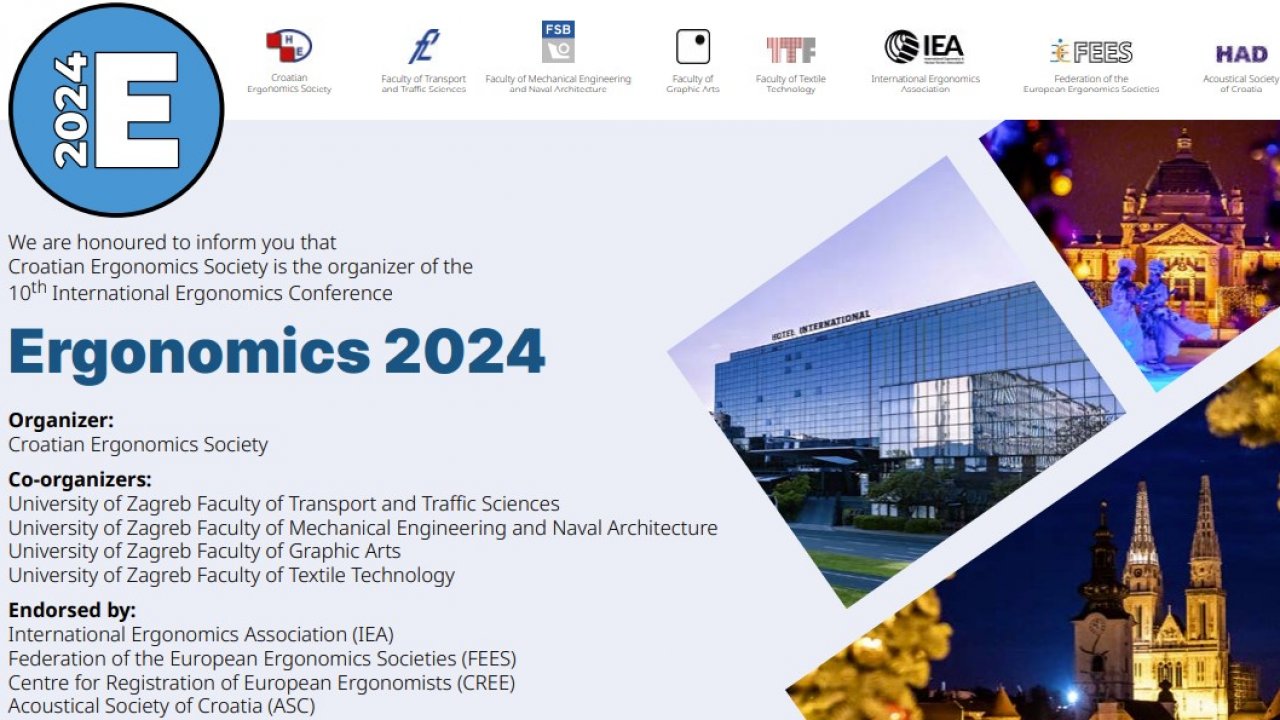
10th International Ergonomics Conference - ERGONOMICS 2024
It is with great pleasure that we invite you to participate in the 10th International Ergonomics Conference - ERGONOMICS 2024, which will be held from December 5th to 6th, 2024 in Zagreb, Hotel International.
Read more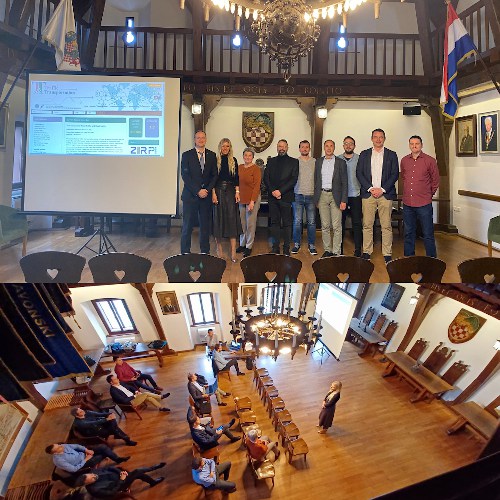
Workshop - improving the publication process and developing the support system for the journal
Editorial Board meeting of the Promet – Traffic&Transportation journal took place on May 16th, 2023 as a workshop aimed at improving the publication process and developing the support system for the journal under the leadership of the Editor-in-Chief, Assoc. Prof. Ivona Bajor, PhD.
Read more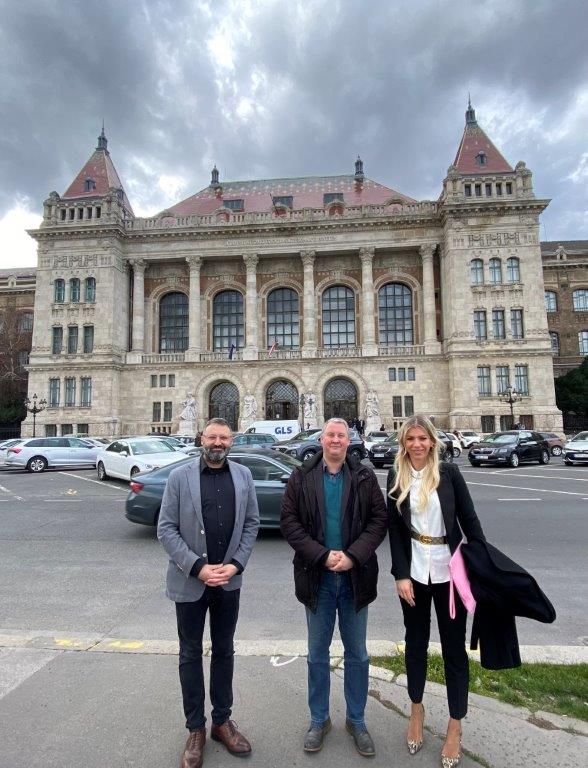
Cooperation between Faculty of Transportation Engineering and Vehicle Engineering, Budapest and journal Promet – Traffic & Transportation
On March 9, 2023, Editor-in-Chief Ivona Bajor and Assistant Editor-in-Chief, Luka Novačko met with long-term partners of the scientific journal Promet – Traffic & Transportation, representatives of the Budapest University of Technology and Economics, Faculty of Transportation Engineering and Vehicle Engineering, Vice-Dean for science and international cooperation Dr. Adam Torok and Dr. Tibor Šipoš.
Read more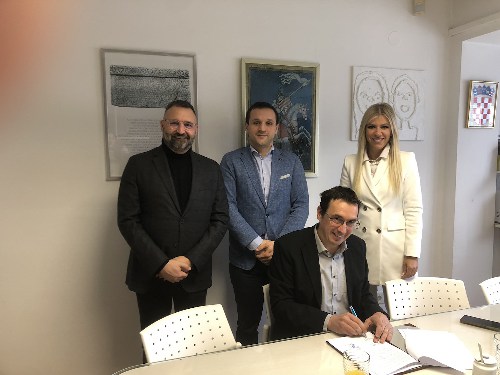
Faculty of Logistics signed a co-publishing agreement
On December 21, 2022, the Faculty of Transport and Traffic Sciences, as the publisher of the scientific journal Promet-Traffic&Transportation and the University of Maribor, Faculty of Logistics signed a co-publishing agreement
Read more
Suradnja vezana uz izdavanje međunarodnog časopisa Promet – Traffic&Transportation
Prošlog tjedna održao se sastanak u Celju kojem su prisustvovali glavna urednica časopisa Promet – Traffic and Transportation, doc. dr. sc. Ivona Bajor i zamjenik glavne urednice izv. prof. dr. sc. Luka Novačko sa predstavnicima Univerze v Mariboru, Fakulteta za logistiko, dekanicom Majom Fošner i prodekanom za financije Andrejem Lisecom.
Read moreEditor's Choice Papers
Explore the selection of scientific papers handpicked by the editor
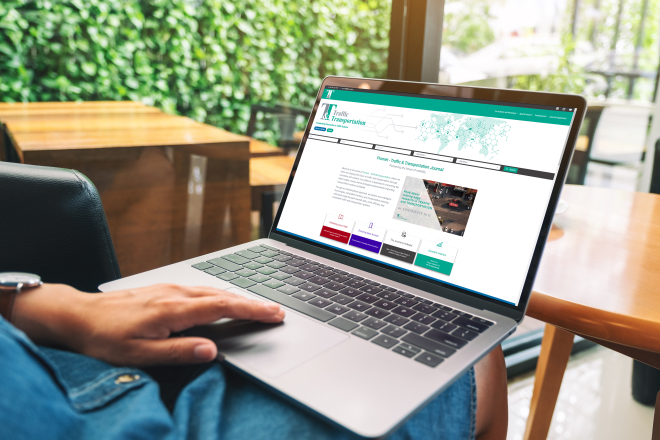
Laura Eboli, Maria Grazia Bellizzi, Gabriella Mazzulla
Evaluating air transport service quality is fundamen-tal to ensure acceptable quality standards for users and improve the services offered to passengers and tourists. In the transportation literature there is a wide range of studies about the evaluation of public transport service quality based on passengers’ perceptions; however, more recently, the evaluation of air transport service quality is becoming a relevant issue. Evaluating service quality in air transport sector represents a more stimulating chal-lenge, given the complexity of air transport system in re-gards to the other systems; in fact, air transport service is characterised by a great variety of service aspects relat-ing to services offered by the airlines and provided by the companies managing airports. The complexity of such a service requires a deep investigation on the methods adopted for collecting and analysing the data regarding passengers’ perceptions. We propose this paper just for treating these interesting aspects and to provide an ex-haustive literature review of the studies analysing ser-vice quality from the passengers’ point of view, where the opinions of the passengers are collected by the Customer Satisfaction Surveys (CSS). We decided to select papers published within the last decade (2010–2020) in journals indexed in important databases such as Scopus and WoS.
2022 (Vol 34), Issue 2
Pavle Bugarčić, Nenad Jevtić, Marija Malnar
Vehicular and flying ad hoc networks (VANETs and FANETs) are becoming increasingly important with the development of smart cities and intelligent transportation systems (ITSs). The high mobility of nodes in these networks leads to frequent link breaks, which complicates the discovery of optimal route from source to destination and degrades network performance. One way to overcome this problem is to use machine learning (ML) in the routing process, and the most promising among different ML types is reinforcement learning (RL). Although there are several surveys on RL-based routing protocols for VANETs and FANETs, an important issue of integrating RL with well-established modern technologies, such as software-defined networking (SDN) or blockchain, has not been adequately addressed, especially when used in complex ITSs. In this paper, we focus on performing a comprehensive categorisation of RL-based routing protocols for both network types, having in mind their simultaneous use and the inclusion with other technologies. A detailed comparative analysis of protocols is carried out based on different factors that influence the reward function in RL and the consequences they have on network performance. Also, the key advantages and limitations of RL-based routing are discussed in detail.
2022 (Vol 34), Issue 6
The purpose of this research is to investigate the effect of land use, built environment and public transportation facilities’ locations on destinations of bike-sharing trips in an urban setting. Several methods have been applied to determine the relationship between predicting variables and trip destinations, such as ordinary least squares regression, spatial regression and geographically weighted regression. Additionally, a comparison between the proposed models, count models and random forest has been conducted. The data were collected in Budapest, Hungary. It has been found that touristic points of interest, and healthcare and educational points have a positive impact on bike-sharing destinations. Public transportation stops for buses, trains and trams attract bike-sharing users, which has a potential for the bike-and-ride system. Land use has different effects on bike-sharing trip destinations; mostly as a circular shape variation within the urban structure of the city, such as residential, industrial, commercial and educational zones. Other variables, such as road length and water areas, form as constraints to bike-sharing trip destinations. Geographically weighted and spatial regression performs better than count models and random forest. This study helps decision-makers in predicting the origin-destination matrix of bike-sharing trips based on the transportation network and land use.
2023 (Vol 35), Issue 1
Marko Orošnjak, Mitar Jocanović, Branka Gvozdenac-Urošević, Dragoljub Šević, Ljubica Duđak, Velibor Karanović
The research on Bus Fleet Management (BFM) has undergone significant changes. It is unclear whether these changes are accepted as technological change or as a paradigm shift. Perhaps unintentionally, BFM is still perceived as routing and scheduling by some, and by others as maintenance and replacement strategy. Therefore, the authors conducted a Systematic Literature Review (SLR) to overview the existing concepts and school of thoughts about how stakeholders perceive the BFM. The SLR post-study exposed that BFM should be acknowledged as a multi-realm system rather than a uniform dimension of fulfilling timely service. Nonetheless, the work encapsulates BFM evolution which shows the need for the multi-realm research abstracted as "Bus Fleet Mobility Management" and "Bus Fleet Asset Management". The difficulties of transport agencies and their ability to switch from conventional to Zero-Emission Buses (ZEBs) illustrates why we propose such an agenda, by which the research is validated through needs both in academia and in practice.
2020 (Vol 32), Issue 6
For urban extra-long underwater tunnels, the obstacle space formed by the tunnel walls on both sides has an impact on the driver's driving. The aim of this study is to investigate the shy away characteristics of drivers in urban extra-long underwater tunnels. Using trajectory offset and speed data obtained from real vehicle tests, the driving behaviour at different lanes of an urban extra-long underwater tunnel was investigated, and a theory of shy away effects and indicators of sidewall shy away deviation for quantitative analysis were proposed. The results show that the left-hand lane has the largest offset and driving speed from the sidewall compared to the other two lanes. In the centre lane there is a large fluctuation in the amount of deflection per 50 seconds of driving, increasing the risk of two-lane collisions. When the lateral clearances are increased from 0.5 m to 2.19 m on the left and 1.29 m on the right, the safety needs of drivers can be better met. The results of this study have implications for improving traffic safety in urban extra-long underwater tunnels and for the improvement of tunnel traffic safety facilities.
2023 (Vol 35), Issue 4
Emma Strömblad, Lena Winslott Hiselius, Lena Smidfelt Rosqvist, Helena Svensson
In search for measures to reduce greenhouse gas emissions from transport, insights into the characteristics of all sorts of trips and specifically trips by car are needed. This paper focuses on everyday leisure trips for social and recreational purposes. Travel behaviour for these purposes is analysed considering individual and household factors as well as properties of the trip, based on Swedish national travel survey data. The analysis reveals that everyday leisure trips are often of joint character and that the average distance travelled per person and day increases with, for example, income, cohabitation, children in the household and residence in rural areas. The result also shows that the studied characteristics vary between studied trip purposes, influencing the sustainability potential of a reduction in car use and suggested measures. For instance, the largest share of passenger mileage comes from social trips, whereas trips for exercise and outdoor life have the largest share of car trips below 5 km. Several characteristics indicate difficulties in transferring trips by car to, for example, bicycle or public transport due to convenience, economy, start times, company etc. The study indicates that there is a need to take a broader view of the effective potential.
2022 (Vol 34), Issue 4









